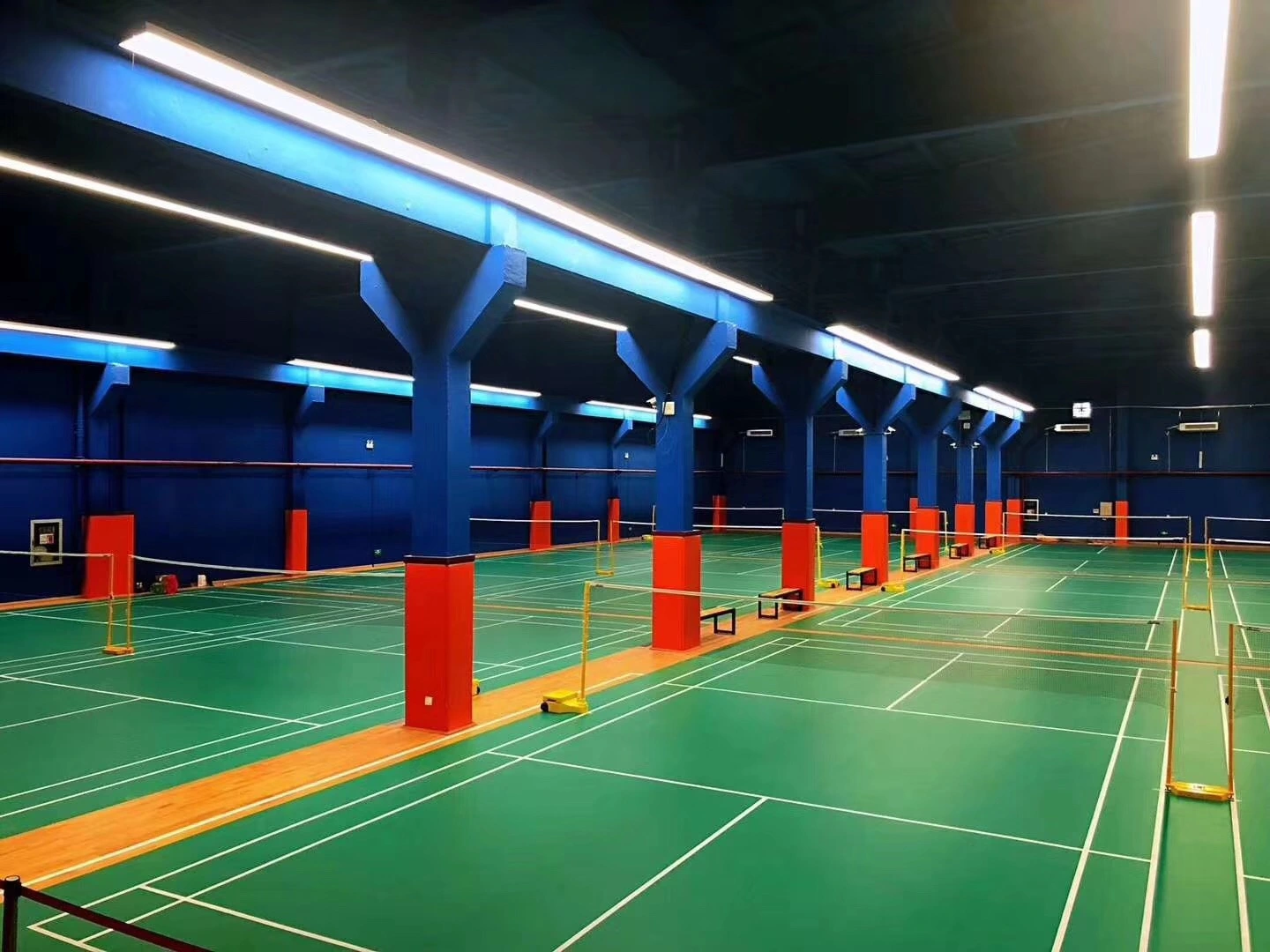How to Design a Perfect Basketball or Badminton Court A Professional Guide to Creating a High-Performance Sports Venue
When planning a sports facility, have you ever struggled with the design and material choices for your courts? A perfect sports surface is more than just laying down a floor and painting lines. It's a science that requires precise design based on the unique characteristics of each sport. Today, we'll use basketball and badminton courts as case studies to show you how to create a top-tier sports space from a professional perspective.
Case Study 1: The High-Impact Basketball Court
Basketball is known for its intense jumping, sudden stops, quick pivots, and collisions. Therefore, a professional basketball court design must prioritize athlete protection and performance enhancement.

- Key Design Elements:
- Shock Absorption System: The core of a basketball court is its shock absorption system. A quality sports floor must effectively absorb the impact of players landing from a jump, reducing stress on their knees and ankles. This often requires a complex multi-layer structure, including elastic pads, a substructure system, and solid hardwood panels.
- Resilience and Ball Rebound: The floor's resilience directly affects how the ball bounces. A perfect basketball court should provide a consistent, predictable ball rebound, which is essential for dribbling, shooting, and other technical moves.
- Slip Resistance: High-intensity stops and pivots demand excellent slip resistance from the floor's surface. A professional topcoat provides the right amount of friction—preventing slips while not hindering a player's quick movements.
- Material Selection:
- Flooring Panels: North American maple or oak are the top choices. These hardwoods offer high hardness and superior durability, able to withstand the high impact and friction of basketball.
- Finish: Use a specialized sports polyurethane finish. It is not only slip- and wear-resistant but also protects the wood, extending the floor's lifespan.
Case Study 2: The Swift and Agile Badminton Court
Unlike basketball, badminton is characterized by light, agile footwork and frequent directional changes. The design of a badminton court should focus on providing excellent foot support and a comfortable feel.

- Key Design Elements:
- Surface Flatness: Badminton courts require extreme flatness. Any minor bumps can affect a player's footwork and judgment.
- Shock Absorption and Resilience: While not needing the same level of heavy-duty shock absorption as a basketball court, a badminton floor must still provide adequate cushioning to reduce the impact from frequent jumps and landings. The resilience should be moderate to ensure comfort and prevent an overly "bouncy" feel.
- Anti-Glare Treatment: Badminton courts are often brightly lit, so the floor finish should be anti-glare to prevent reflections from affecting a player's vision.
- Material Selection:
- Flooring Panels: Maple or oak are also recommended. However, for badminton, a slightly softer hardwood can be used to balance comfort with durability.
- Finish: The finish should have a lower coefficient of friction to facilitate smooth foot slides while still meeting slip-resistance standards for safety. A matte or semi-matte finish is ideal for reducing light reflection.
More Than Just a Floor, It's a System
Whether for basketball or badminton, designing a perfect sports court is more complex than just picking a type of wood. It is a systematic process that requires comprehensive consideration of the court's use, sport intensity, athlete needs, and environmental factors.
Our professional sports flooring products are designed based on this in-depth understanding and practical experience. We don't just provide high-quality wood; we offer a complete system solution that includes DIN-certified shock-absorbing substructures, professional finishes, and scientific moisture and ventilation designs.
By choosing us, you're not just buying a floor—you're investing in a scientifically validated, high-performance system built for safety and excellence. Let us help you create an unparalleled sports arena for your athletes.
Ready to get a customized sports flooring solution for your facility? Contact us today!